
Louis Victor Pierre Raymond, 7th Duc de Broglie was a French aristocrat and physicist who made groundbreaking contributions to quantum theory. In his 1924 PhD thesis, he postulated the wave nature of electrons and suggested that all matter has wave properties. This concept is known as the de Broglie hypothesis, an example of wave–particle duality, and forms a central part of the theory of quantum mechanics.

Jean-Pierre Vigier was a French theoretical physicist, known for his work on the foundations of physics, in particular on his stochastic interpretation of quantum physics.

Paul Pierre Lévy was a French mathematician who was active especially in probability theory, introducing fundamental concepts such as local time, stable distributions and characteristic functions. Lévy processes, Lévy flights, Lévy measures, Lévy's constant, the Lévy distribution, the Lévy area, the Lévy arcsine law, and the fractal Lévy C curve are named after him.

The European Mathematical Society (EMS) is a European organization dedicated to the development of mathematics in Europe. Its members are different mathematical societies in Europe, academic institutions and individual mathematicians. The current president is Jan Philip Solovej, professor at the Department of Mathematics at the University of Copenhagen.
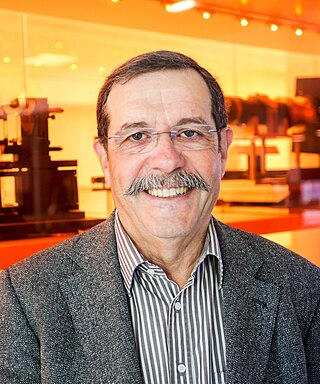
Alain Aspect is a French physicist noted for his experimental work on quantum entanglement.

Léon Nicolas Brillouin was a French physicist. He made contributions to quantum mechanics, radio wave propagation in the atmosphere, solid-state physics, and information theory.
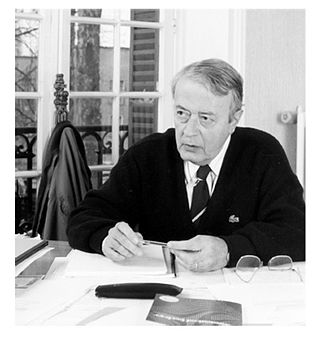
Georges François Paul Marie Matheron was a French mathematician and civil engineer of mines, known as the founder of geostatistics and a co-founder of mathematical morphology. In 1968, he created the Centre de Géostatistique et de Morphologie Mathématique at the Paris School of Mines in Fontainebleau. He is known for his contributions on Kriging and mathematical morphology. His seminal work is posted for study and review to the Online Library of the Centre de Géostatistique, Fontainebleau, France.
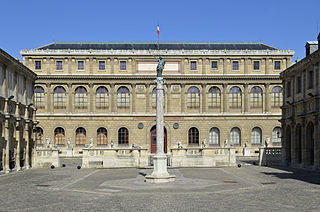
École des Beaux-Arts refers to a number of influential art schools in France. The term is associated with the Beaux-Arts style in architecture and city planning that thrived in France and other countries during the late nineteenth century and the first quarter of the twentieth century.

Mathias Fink, born in 1945 in Grenoble, is a French physicist, professor at ESPCI Paris and member of the French Academy of Sciences.
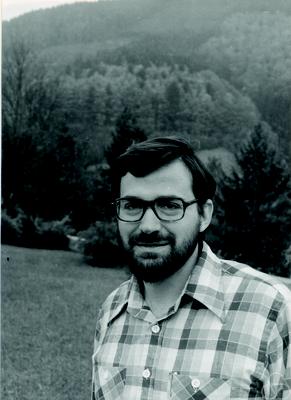
George C. Papanicolaou is a Greek-American mathematician who specializes in applied and computational mathematics, partial differential equations, and stochastic processes. He is currently the Robert Grimmett Professor in Mathematics at Stanford University.
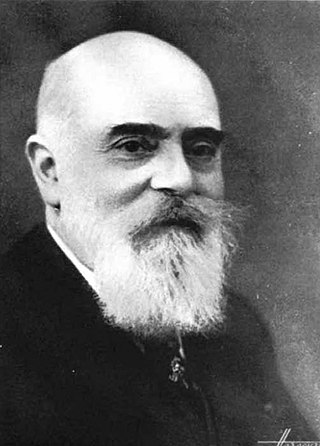
Henri Abraham (1868–1943) was a French physicist who made important contributions to the science of radio waves. He performed some of the first measurements of the propagation velocity of radio waves, helped develop France's first triode vacuum tube, and with Eugene Bloch invented the astable multivibrator. He was murdered at Auschwitz during the Holocaust.
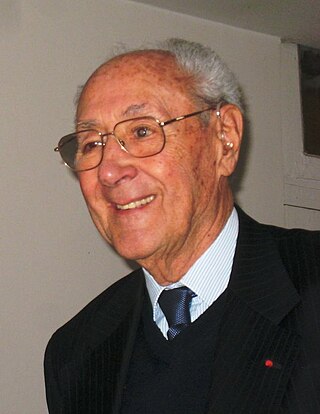
Jean Robieux was a French physicist. A graduate from École Polytechnique and Doctor of Science, he is a leading French specialist in laser and optronics. He is the former scientific director of the Research Center of Alcatel Mobile Phones at Marcoussis, and during many years, head of the Robotics college at the École centrale Paris. He is a chairman of the board of directors of the school and chairman of the Scientific Council. He followed in particular the development the materials department. He suggested the initial creation of the ECAM Rennes - Louis de Broglie school in 1988.
Jacques Charles Émile Jouguet was a French engineer and scientist, whose name is attached to the Chapman–Jouguet condition.

Jacques Jean-Pierre Neveu was a Belgian mathematician, specializing in probability theory. He is one of the founders of the French school of probability and statistics.
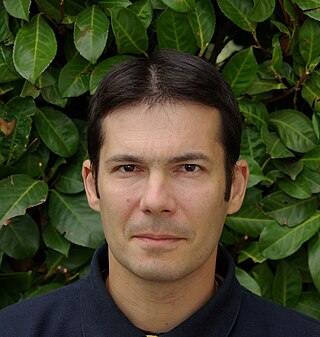
Emmanuel Trélat is a French mathematician.
Stéphan Fauve is a French physicist. He is a professor at the École normale supérieure (ENS) in Paris, a member of the ENS Physics Laboratory.
Patrick Mora is a French theoretical plasma physicist who specializes in laser-plasma interactions. He was awarded the 2014 Hannes Alfvén Prize and 2019 Edward Teller Award for his contributions to the field of laser-plasma physics.
Nader Masmoudi is a Tunisian mathematician.
Pierre Binétruy was a French theoretical physicist, known for his research on cosmology, gravitational waves, strong nuclear interactions, and supersymmetry.

The Fresnel Institute is a research laboratory dedicated to optics and photonics located in Marseille, France. It is a joint research unit between the French National Centre for Scientific Research (CNRS), Aix-Marseille Université and Centrale Méditerranée, created on 1 January 2000.















